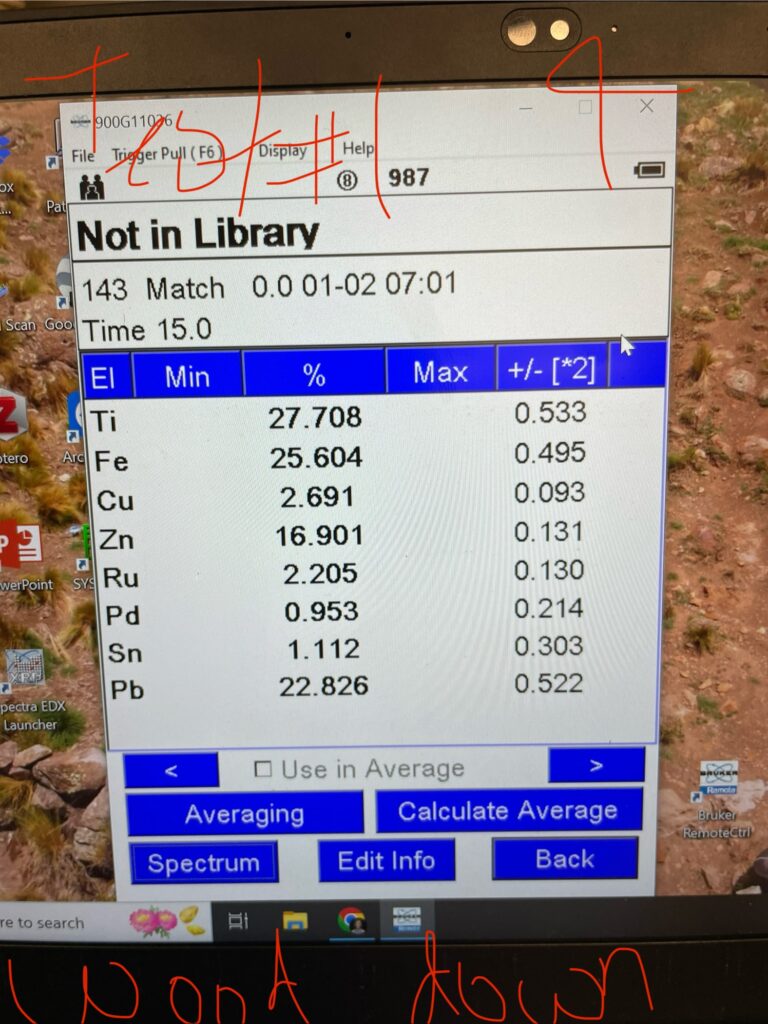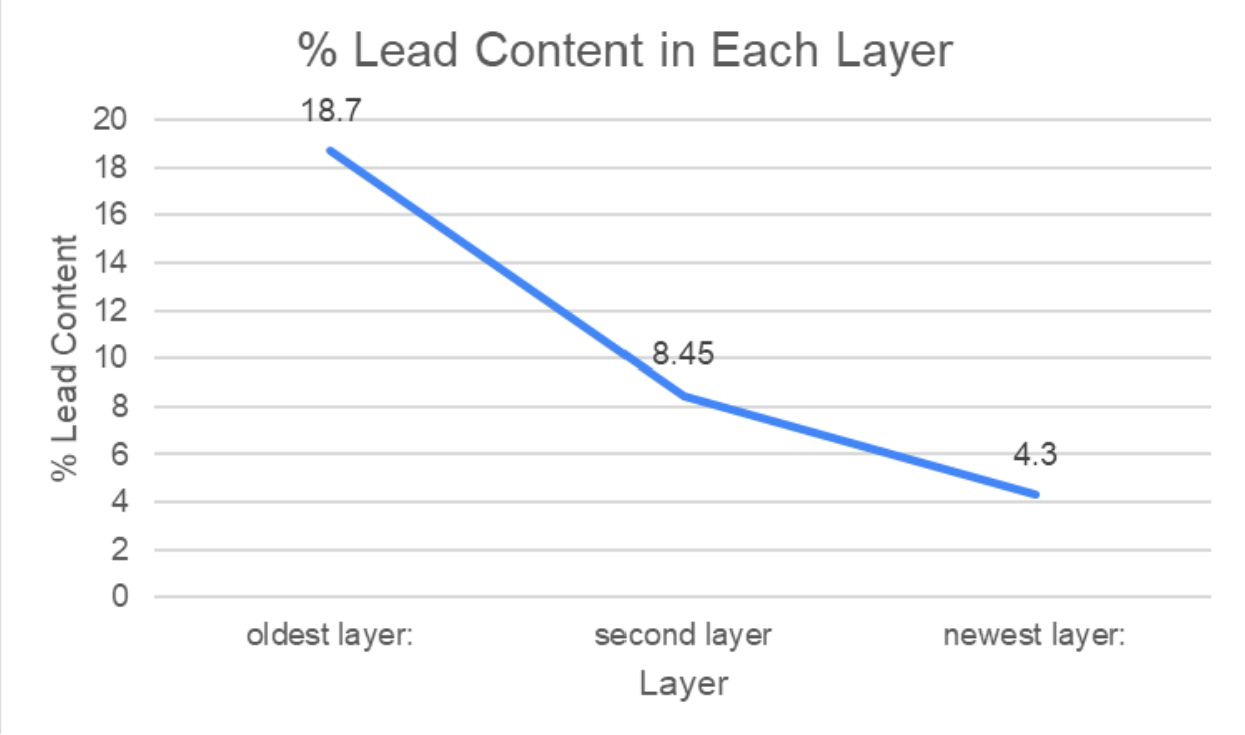Did the Outside Layer of Seccombe House Change?
To explore the change of the outside of Seccombe house, we decided to test paint samples. We were curious in how similar the exterior of Seccombe is to its original, how many times it was repainted, and if the outside wood was original. We used the pXRF (portable X-Ray Fluorescence analysis) to test these paint samples, scraping off each layer of paint with a scalpel and testing them with the device. The pXRF was able to tell us the elemental composition of each paint layer.

We primarily looked at the lead counts in the paint. Because lead paint was used mainly before 1978 (before it was banned by the federal government), our hypothesis was that the wood was original, and that the deeper the layer the more lead we would find. We looked at different research about lead paint to help supplement.
Below is an example of the raw data that the pXRF produced. These images show some results from our fourth test sample, which was a chip from an outside window sill. After taking pictures of the raw data, we immediately labeled them, as shown by the red text in the images. This allowed us to accurately keep track of our data and analyze it in an effective way. This data shows the percent amount of each element that is present in the sample being tested. For example, the image displaying the data from sample #4, layer #2, test #1 shows that the sample has 27.7% titanium.


Graph: Percentage of Lead Content in Each Layer

In order to test the percent lead in each layer, we first took two samples from the outside of the house. We took each sample and measured the amount of lead in the top layer of paint. The average of the two samples had 4.3% lead content. We then took tweezers and pulled off the top layer. We knew that we had reached a new layer because the paint changed color and texture. The blueish gray paint was more powdery, while the white layer underneath was more gummy. The average lead content was about 8.45%, which proved our hypothesis that the layer underneath was older. We were able to see one more layer of paint underneath, which was more gray and peeling. This final layer averaged to about 18.7% lead, meaning that it was probably the oldest layer of paint and definitely was painted in the mid-1900s or earlier!
As the layers get deeper, the lead concentration does increase! This likely means that the wood is original, because of the sheer amount of paint layers and because the lowest paint level is likely from the early twentieth century just based on its chemical makeup.